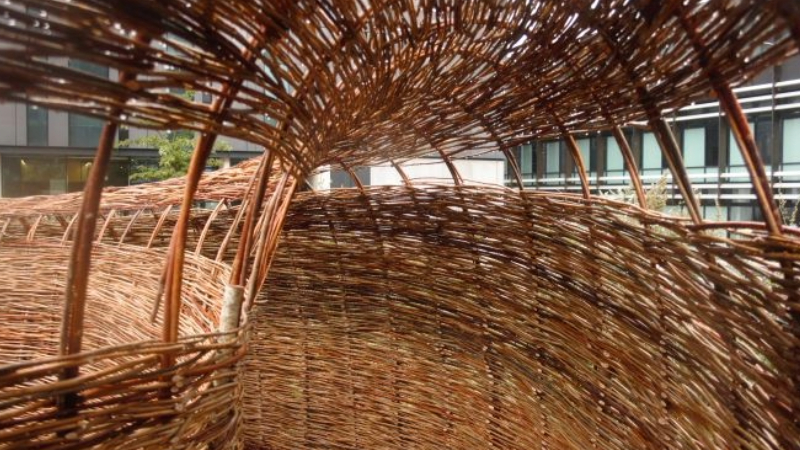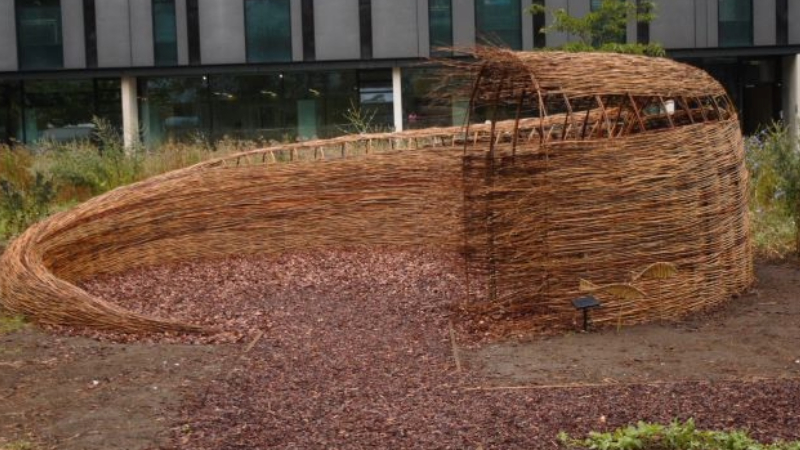WillowSpace sculpture to be unveiled at an Oxford Brookes pollinator meadow

Artists, conservationists, staff and students are preparing for the official opening of the inspirational new WillowSpace sculpture at Oxford Brookes University.
Lilli Tranborg, an Environmental Artist and Fine Art Masters student at Oxford Brookes, designed WillowSpace, which is located in the pollinator meadow in the central courtyard at the University’s Headington Campus. The sculpture measures six metres around the outside, 4.4 metres inside and 1.7 metres at its highest point.

WillowSpace will be officially unveiled by Professor Simonetta Manfredi, Director of Research, Innovation and Enterprise at Oxford Brookes University, at an event on 1 August which will include a video screening and speech by the artist.
The sculpture was built with the help of Willow Coppice, an organisation which grows and weaves willow creations and runs workshops to teach others willow weaving skills. The finishing touches were then applied earlier this month during a day of weaving workshops attended by volunteers and children including pupils from Windmill Primary School in Headington.
Lilli said: “It’s been fantastic giving children and adults the chance to put the finishing touches to it. It’s designed so you can walk inside it, with the space gradually reducing until you can’t go any further. It’s a space for people to step away from their frantic lives, relax and reconnect with nature.”
Lynn Knapp, headteacher at Windmill Primary School, said: “Working with experts in their fields means we are extending the children’s knowledge. Through the willow weaving they are learning a new skill. Every activity we do with the children about the environment strengthens their resolve to protect it because they are passionate already. We build and build on that all the time.”
As well as making their own willow fishes, the Windmill Primary School children took part in activities organised by the Butterflies Under Pressure initiative run by Dr Casper Breuker from Oxford Brookes University and Dr Melanie Gibbs from the UK Centre for Ecology and Hydrology.
The children designed nectar cafes, garden areas with pollinator flowers to help bees to thrive, and planted pollinator seeds in biodegradable pots, decorated with card butterflies.
The children said they enjoyed the workshops. Evangeline, eight, said: “I liked making the willow fish a lot. I liked the part where you got to see it at the end with no bits of willow sticking out and you got to name it.”
Leo, seven, said: “I liked doing the fish and planting the seeds. I liked the fish because I started off with a few pieces of willow and then made it into a fish shape.”
